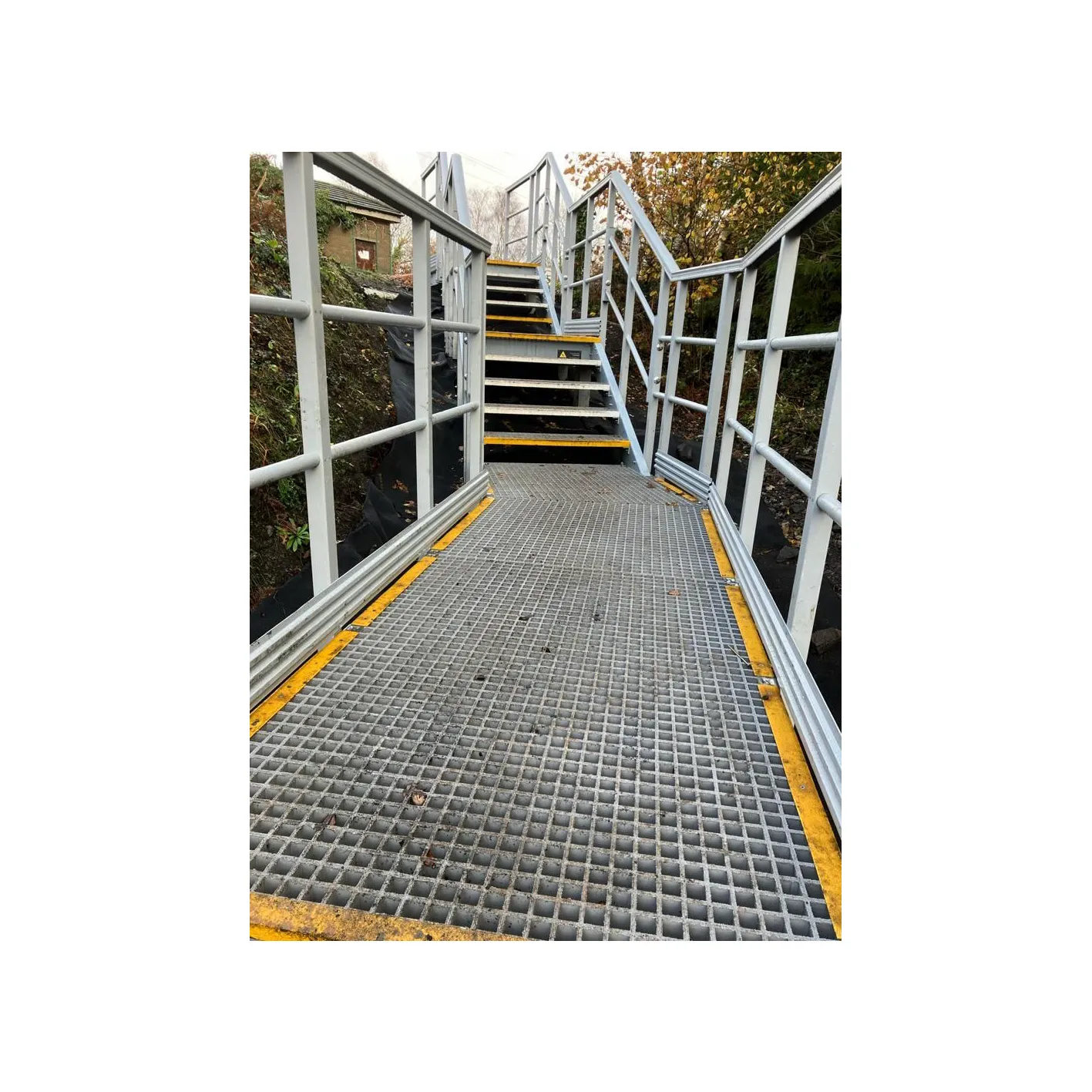loading...
- No. 9, Xingyuan South Street, Dongwaihuan Road, Zaoqiang County, Hengshui, Hebei, China
- admin@zjcomposites.com
- +86 15097380338
- Welcome to visit our website!
GRP Pultruded Grating Solutions for Durable and Lightweight Applications
The Advantages of GRP Pultruded Grating in Modern Applications
In the evolving world of construction and infrastructure, materials that offer durability, strength, and efficiency have become paramount. Among these, Glass Reinforced Plastic (GRP) pultruded grating has emerged as a superior option, offering a range of benefits that make it suitable for various applications across multiple industries.
What is GRP Pultruded Grating?
GRP pultruded grating is a type of flooring material made by combining glass fibers with a resin, which is then pulled through a heated die to create a rigid and strong structure. The resulting grating is lightweight yet incredibly tough, making it an ideal choice for environments where traditional materials might falter. The process of pultrusion ensures uniformity and consistency in the product, which contributes to its reliability and performance.
Corrosion Resistance
One of the most significant advantages of GRP pultruded grating is its exceptional resistance to corrosion. Unlike metal grates that can rust when exposed to moisture, chemicals, and harsh environments, GRP does not corrode. This property makes it particularly beneficial in industries such as chemical processing, wastewater treatment, and marine applications, where exposure to corrosive substances is common. By opting for GRP grating, companies can effectively extend the lifespan of their installations while reducing maintenance costs.
Lightweight and Easy to Install
GRP pultruded grating is significantly lighter than steel or concrete alternatives. This lightweight nature simplifies the transportation and installation processes, reducing labor costs and the need for extensive lifting equipment. Moreover, the ease of installation means that projects can be completed more swiftly, which is a crucial factor in today’s fast-paced construction environment.
grp pultruded grating

Safety Features
Safety is a critical concern in any industrial setting, and GRP pultruded grating excels in this area as well. It offers excellent slip resistance due to its textured surface, which minimizes the risk of accidents in areas prone to spills or wet conditions. Furthermore, GRP does not conduct electricity, providing an added layer of safety in environments where electrical hazards may be present.
Aesthetic Versatility
Beyond its functional benefits, GRP pultruded grating also boasts aesthetic versatility. It can be produced in various colors and styles to suit different design requirements. This feature allows architects and designers to incorporate grating into buildings and structures without compromising on visual appeal. Whether used in walkways, platforms, or even decorative elements, GRP can complement a range of architectural styles.
Environmental Considerations
As sustainability becomes increasingly vital in modern construction practices, GRP pultruded grating stands out as an environmentally friendly choice. The materials used in its production often have a lower environmental impact compared to traditional construction materials. Moreover, GRP is fully recyclable, which aligns with global efforts to reduce waste and promote sustainability in the industry.
Conclusion
In conclusion, GRP pultruded grating represents a significant advancement in flooring material technology, offering numerous advantages across various sectors. Its corrosion resistance, lightweight nature, safety features, aesthetic versatility, and environmental benefits make it a preferred choice for many industrial and commercial applications. As industries continue to seek out innovative materials that combine performance with sustainability, GRP pultruded grating is poised to play a crucial role in shaping the future of construction and infrastructure. With its impressive array of features, it not only meets the practical needs of today’s projects but also contributes to a more sustainable built environment.
-
The Rise of FRP Profiles: Strong, Lightweight, and Built to LastNewsJul.14,2025
-
SMC Panel Tanks: A Modern Water Storage Solution for All EnvironmentsNewsJul.14,2025
-
GRP Grating: A Modern Solution for Safe and Durable Access SystemsNewsJul.14,2025
-
Galvanized Steel Water Tanks: Durable, Reliable, and Ready for UseNewsJul.14,2025
-
FRP Mini Mesh Grating: The Safer, Smarter Flooring SolutionNewsJul.14,2025
-
Exploring FRP Vessels: Durable Solutions for Modern Fluid HandlingNewsJul.14,2025
-
GRP Structures: The Future of Lightweight, High-Performance EngineeringNewsJun.20,2025
